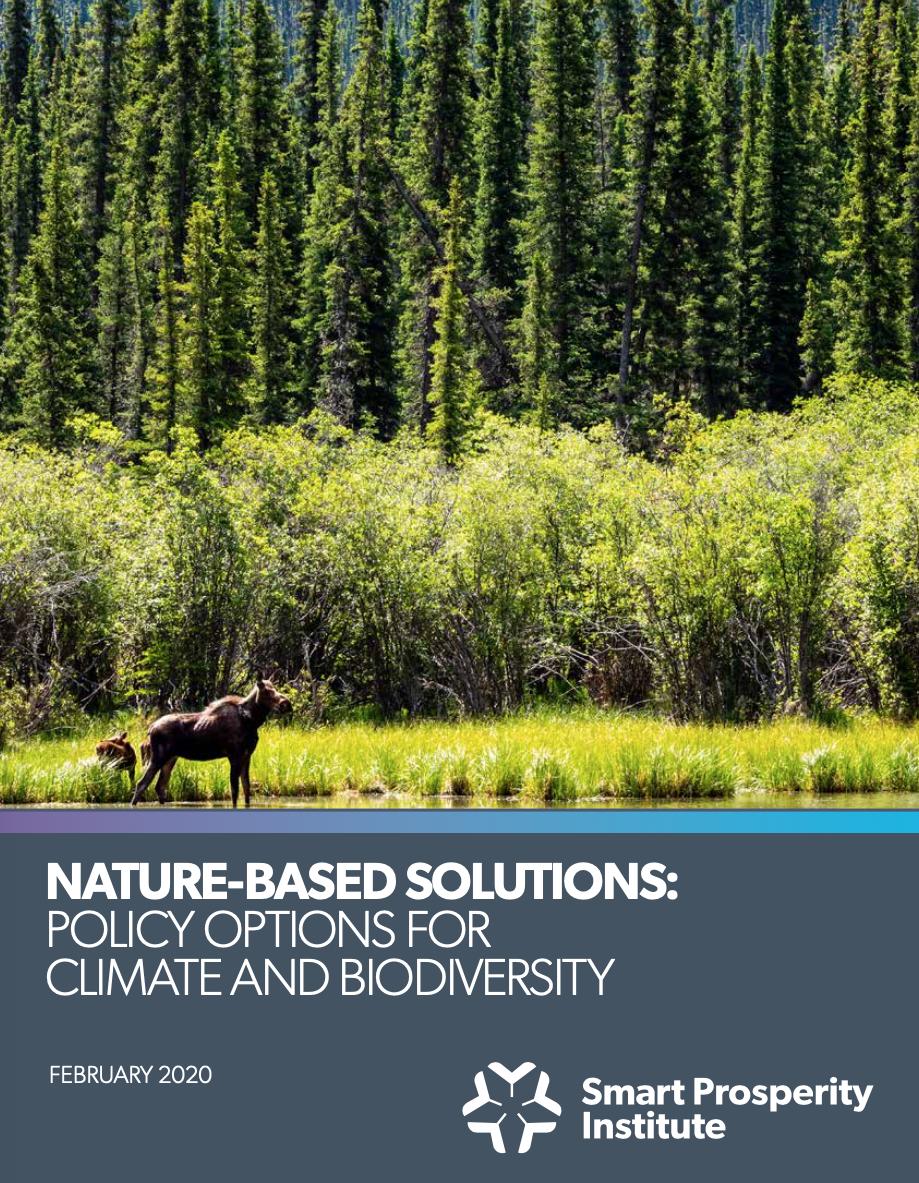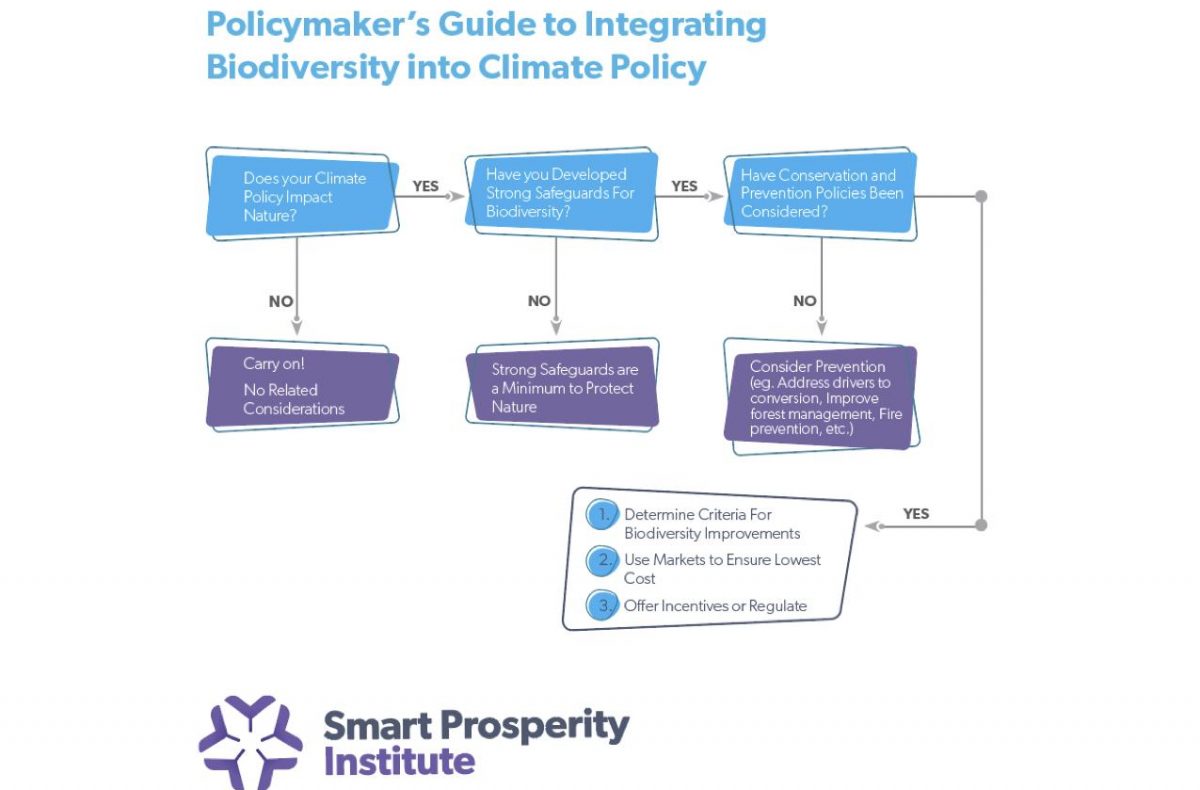Co-authored by Smart Prosperity Institute researchers, Katherine Monahan and Ben Filewood, with support from Metcalf and the McCall MacBain Foundation, this report is aimed towards policymakers and other stakeholders interested in nature-based climate solutions. The report describes potential policy tools that deliver GHG mitigation while also protecting or improving biodiversity.
Section 1 of the report explores key examples of both private and public funding models for nature-based climate solutions, answering questions such as: What financing models exist to pay for nature-based climate solutions? And how can these funds be used to maximize overall benefits for climate and biodiversity while optimizing costs?
Section 2 takes a deep dive into setting criteria for nature-based climate solutions project selection. The section explores economic valuation techniques and concludes with a recommendation on how to avoid ad hoc project selection.
Nine key messages from the report:
- Canada’s nature is a fundamental piece of the puzzle for fighting climate change.
- However, policies that harness nature-based climate solutions, without considering biodiversity – and the other important ecosystem services that nature provides – risk undermining Canada’s broader goals to protect nature.
- Governments need to consider climate benefits and benefits to nature through a single policy lens.
- Using a single policy lens can: (1) eliminate negative and inadvertent impacts on nature, (2) lead to better measurement and optimization of benefits for both climate and nature, and (3) lower costs and maximize value through efficient project selection.
- Policy tools for advancing nature-based climate solutions include direct public funding, carbon offsets, regulations and pricing mechanisms. Optimizing outcomes using these tools requires a holistic approach to policy development.
- Direct public funding needs to ensure that actions result in real, additional, permanent and verifiable GHG mitigation outcomes, and also seek to avoid leakage. It should also require positive biodiversity outcomes through improvements in pre-selected criteria. Projects should be chosen based on best value for cost, which can be achieved through frameworks such as “reverse auctions”.
- Carbon offset frameworks can explicitly value carbon within forests and lands, thereby leveraging private sector investment. Biodiversity outcomes can be secured, at a minimum, by developing strong safeguards. Incentives or mandatory compliance obligations for offsets that offer biodiversity benefits are also an option. Offset stacking (the ability of one project to generate credits in more than one market) could, in theory, provide more appropriate compensation to projects that offer both climate and biodiversity benefits if and when these parallel markets are developed or strengthened.
- Regulation or carbon pricing would require better tracking and reporting of land-based emissions to develop stronger accountability frameworks.
- Developing evidence-based criteria for project selection could stem from economic valuation (though not recommended for programs that must evaluate many small projects), rule-based common unit comparisons, or continuous-improvement metrics that are compared based on their efficiency.
A video recording featuring the report’s lead authors discussing their research can be found here.



